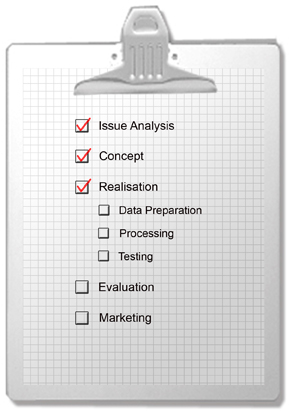1.3. Realisation
Learning Objectives
You will be able...
- ...to list at least two ways how to prepare geometric or thematic data for a specific project.
- ...to explain why a finished application has to be tested and where it has to be tested.
Introduction
|
After having created the concept of the application we are able to
start with the realisation. In an earlier step you had to look for data at
various sources and view the located data to define its quality. Even if you
would have received data from a customer, it was necessary to view the data
at an early stage. Normally the data has to be preprocessed before using it
for the application. |
 Realisation Phase Realisation Phase |
